- Home
- TV History
- Network Studios History
- Cameras
- Archives
- Viewseum
- About / Comments
Skip to content
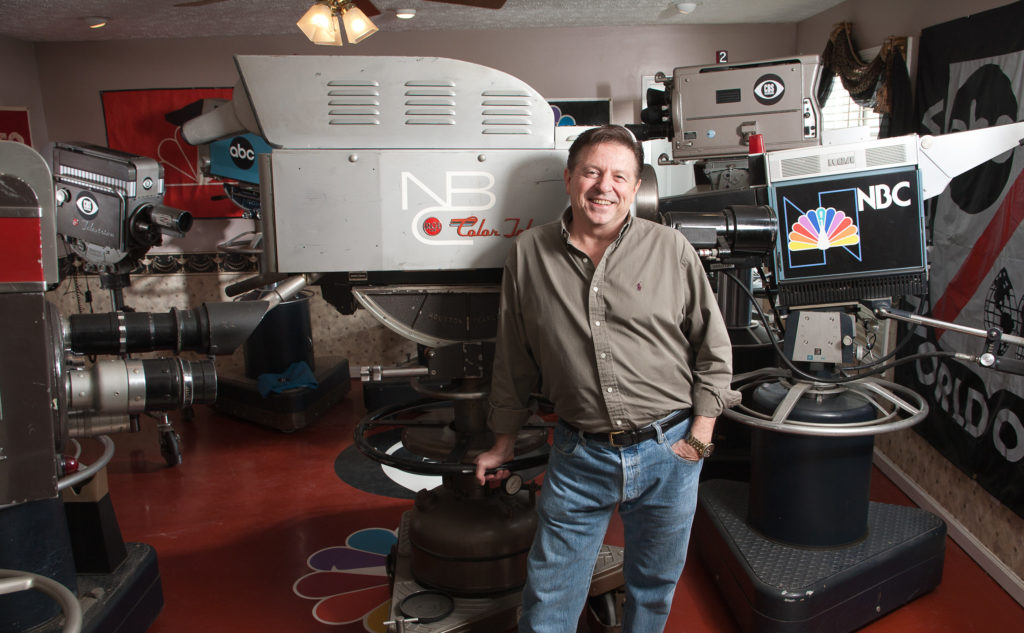
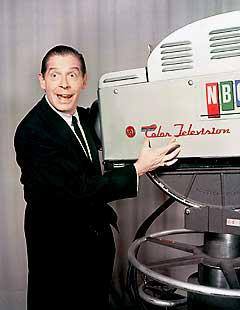



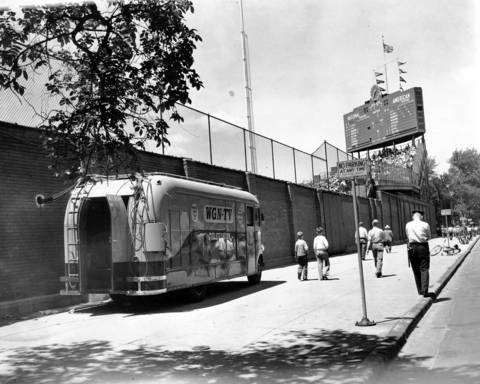

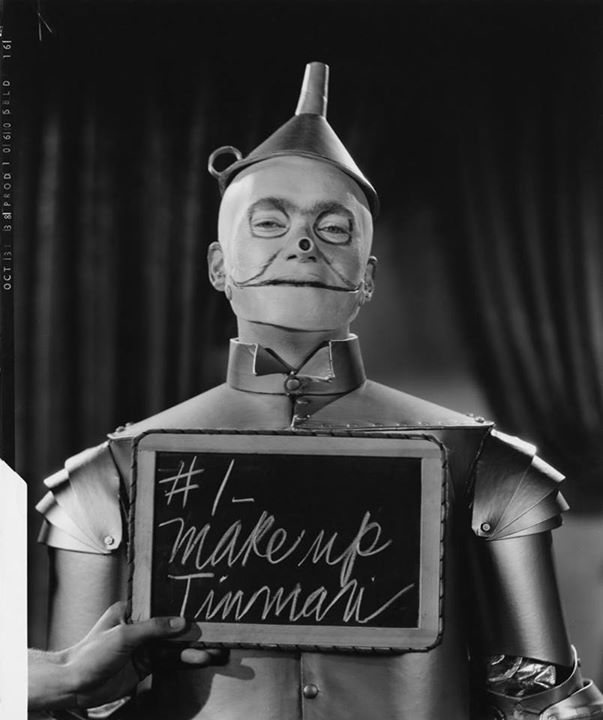

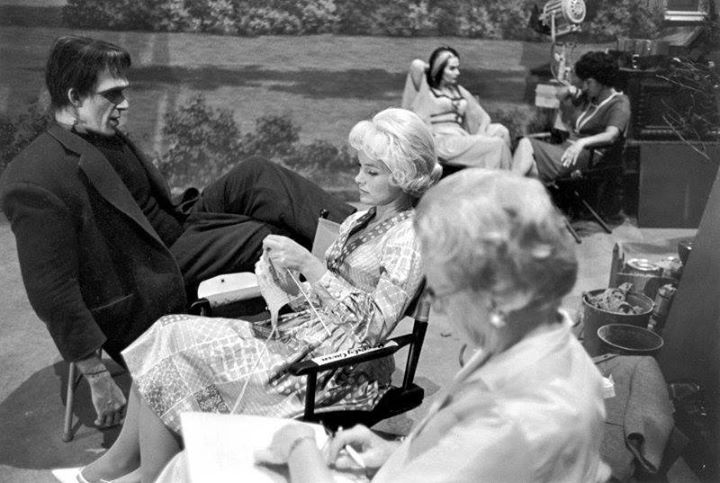





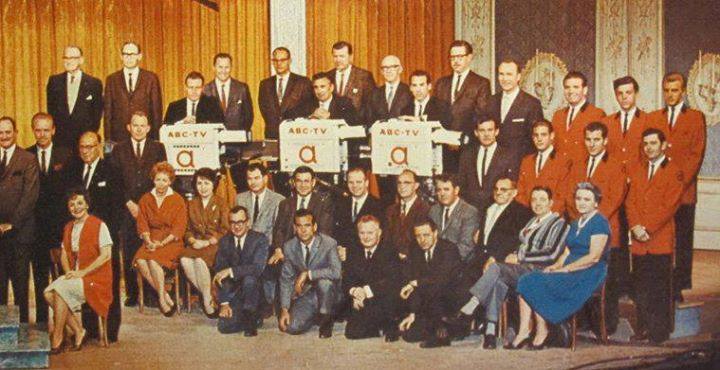

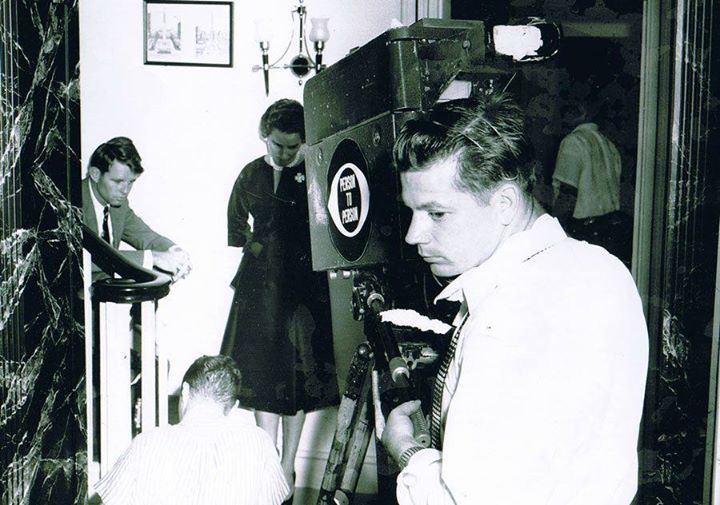

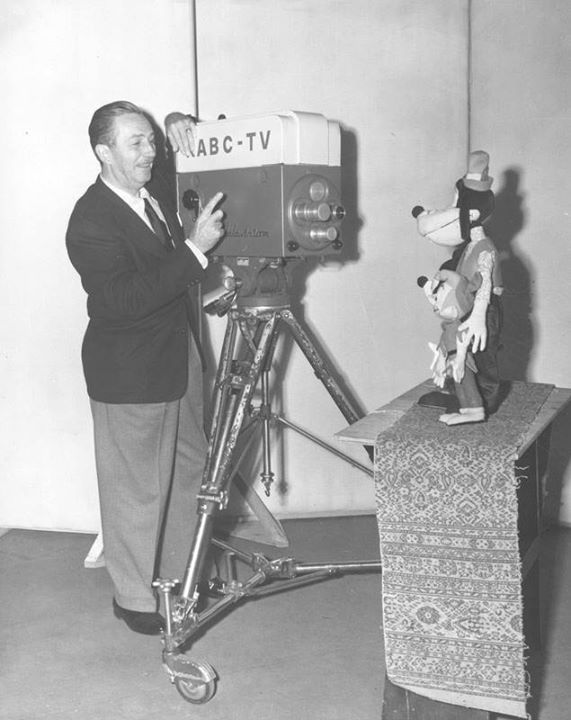

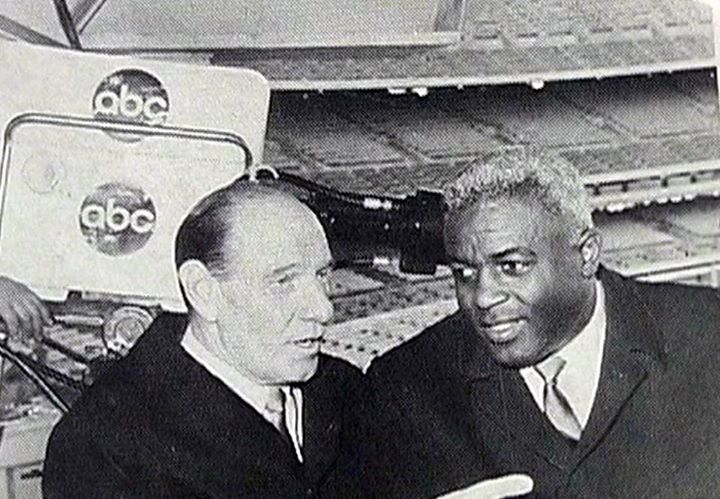

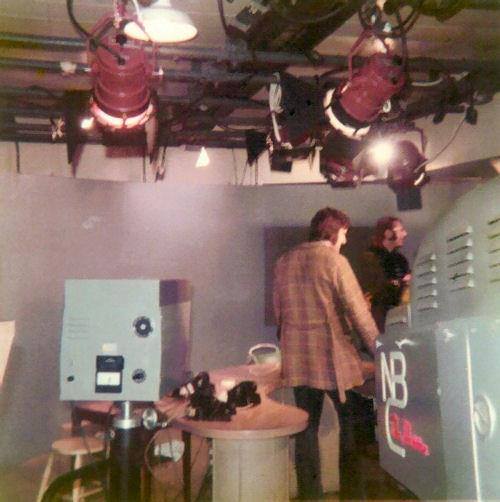



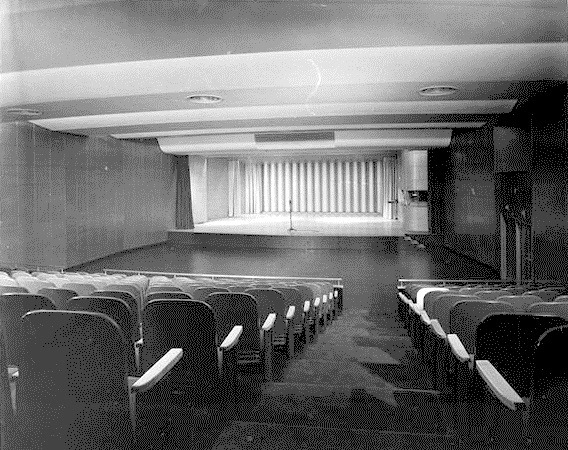

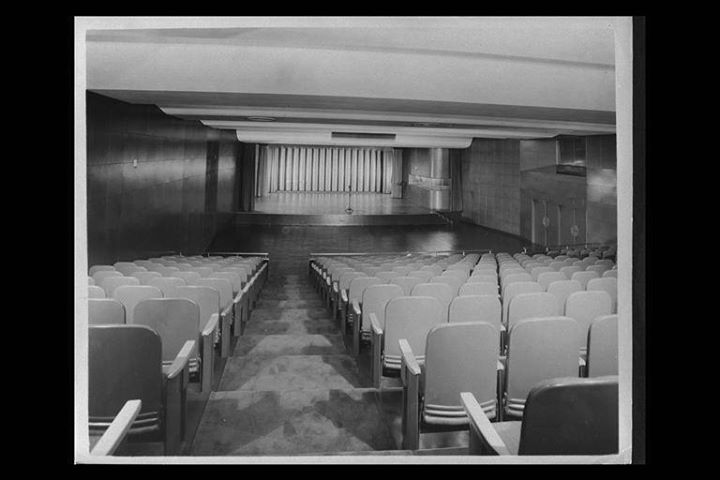

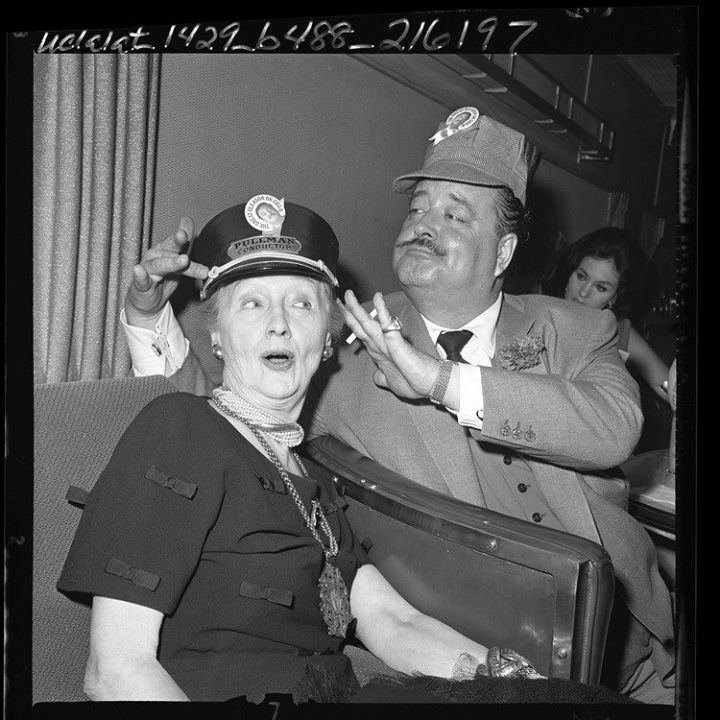

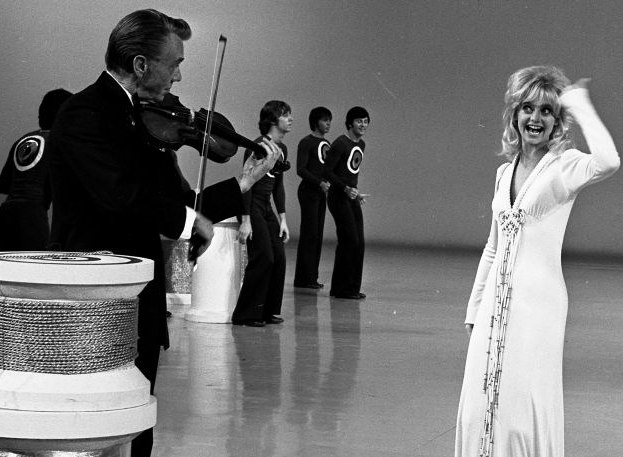

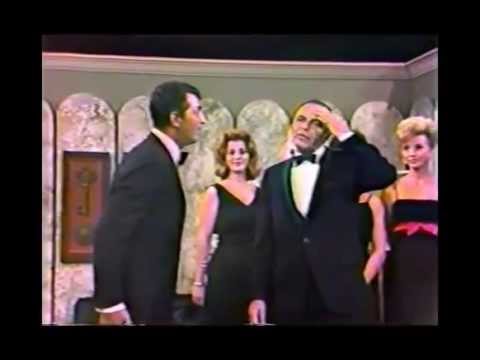

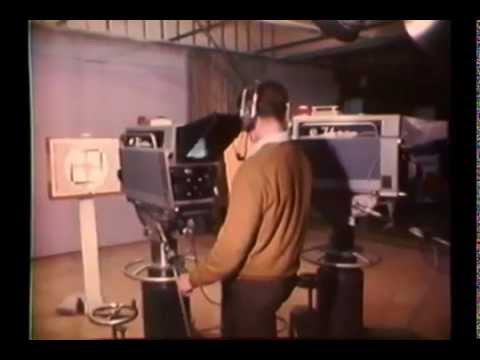

Posts in Category: TV History
Page 68 of 136
« Previous
1
2
3
4
5
6
7
8
9
10
11
12
13
14
15
16
17
18
19
20
21
22
23
24
25
26
27
28
29
30
31
32
33
34
35
36
37
38
39
40
41
42
43
44
45
46
47
48
49
50
51
52
53
54
55
56
57
58
59
60
61
62
63
64
65
66
67
68
69
70
71
72
73
74
75
76
77
78
79
80
81
82
83
84
85
86
87
88
89
90
91
92
93
94
95
96
97
98
99
100
101
102
103
104
105
106
107
108
109
110
111
112
113
114
115
116
117
118
119
120
121
122
123
124
125
126
127
128
129
130
131
132
133
134
135
136
Next » Rare! RCA TK41C Brochure
On August 3, 2014
- TV History

Bobby Ellerbee with his collection of vintage television cameras. (photo by Parker Clayton Smith)
Rare! RCA TK41C Brochure
For those of us that love the big silver beast, here is a link to a catalog write up from RCA in the early 60s, courtesy of our friend Steve McVoy at The Early Television Foundation and Museum. Enjoy and share!
John Vassos and RCA ‘Television’
On August 2, 2014
- TV History
John Vassos and RCA ‘Television’
If you look where Milton’s hand is, you are also seeing the hand of one of America’s first industrial designers…John Vassos.
The ‘Television’ and ‘Color Television’ badges that adorn all the early RCA cameras and telecine equipment was designed by Mr. Vassos. The classic look and style of the TK40/41 was also a part of his contribution to form and function as he was consulted on the final look of the camera.
Vassos came to the attention of David Sarnoff a few years before the opening of the 1939 World’s Fair and was chosen to design the RCA Pavillion there, but his work extended into the design of the television sets on display there and even to the look of the first RCA Mobile Units which had a lot of Vassos art deco chrome stylings.
I think he also had a hand in the look of the TK10, TK30 and TK11/31s. The chrome lined red striping on the TK10s is very Vassos looking. He also had a hand in the look of RCA’s radio receivers and was the first to design an RCA cabinet unit that contained a radio, television and phonograph player.


Compatible Color TV Announcement…December 19, 1953
On August 2, 2014
- TV History
Compatible Color TV Announcement…December 19, 1953
‘Your Show Of Shows’ was NBC’s top rated show and that’s where they chose to make this announcement on Saturday night, December 19, 1953. The decision had come down from the FCC that Thursday afternoon and capped a multi year court battle which pitted the CBS backed Field Sequential System against RCA’s Dot Sequential System. Richard Harkness reports.
https://www.youtube.com/watch?v=ojJCJIaDp9Q
Airing during Sid Caesar’s “Your Show of Shows”, NBC spokesman Richard Harkness announced that RCA had won the “compatible color television” standards fight …
Great WGN Photo Album…Over Two Dozen Rare Photos
On August 2, 2014
- TV History
Great WGN Photo Album…Over Two Dozen Rare Photos
Since April 5, 1948, WGN has been one of the few independent broadcasters in the US, but has done well. From sports to kids shows, and everything in between, WGN has covered a lot of ground and you’ll see a lot of that history here. Enjoy and share!
http://galleries.apps.chicagotribune.com/chi-vintage-wgn-tv-photos-20140416/
Vintage: WGN-TV — Chicago Tribune
WGN Television, whose call letters are derived from the Chicago Tribune’s first slogan, “World’s Greatest Newspaper”, hit the airwaves on April 5, 1948. “Not long ago, people said it couldn’t happen,” the Trib noted of the station’s debut. “But last night, with the speed of light, a stellar program…
Saved From The Cutting Room Floor…”If I Only Had A Heart”
On August 2, 2014
- TV History
Saved From The Cutting Room Floor…”If I Only Had A Heart”
Few know that Buddy Ebsen was the original TIn Man in ‘The Wizard Of Oz’. Actually he was cast as The Scarecrow, but with the directors permission, he and Ray Bolger swapped roles. Only a few photos and a this super rare recording of him in that role exist.
This photo shows him in full makeup and that’s what almost killed him…the makeup, which was mostly an aluminum powder. After a few weeks of inhaling the powder, he had a violent reaction and was rushed to the hospital where he stayed for nearly a month. He was replaced by Jack Haley and the aluminum powder was changed to an aluminum paste.
As I understand it, “If I Only Had A Heart”, The TIn Man’s only solo was recorded by Ebsen the day before his collapse on the set. I have heard that Ebsen’s voice is intact on at least one of the many reprises of “We’re Off To See The Wizard”.
‘The Munsters’…Unaired Color Pilot And Some Surprises!
On August 1, 2014
- TV History
‘The Munsters’…Unaired Color Pilot And Some Surprises!
What do ‘The Musters’ and ‘Leave It To Beaver’ have in common?
The two men that produced ‘The Munsters’…Joe Connelly and Bob Mosher…that’s what. They created ‘Leave It To Beaver’ and before that, wrote over 1,500 episodes of ‘Amos ‘n’ Andy.
Here’s another surprise…the show only ran for two seasons! Seems much longer than that doesn’t it? Season one started September 24, 1964 with 38 episodes. Season two ended May 12, 1966 with the 32nd episode.
The link at the top takes you to the color pilot of the show which is in two parts. Yvonne DeCarlo as Lilly and Butch Patrick as Eddie were added after the pilot replacing Joan Marshal as Phoebe Munster. Patrick replaced Happy Derman as Eddie. The screen credits are a couple of minutes in. Enjoy and share!
Pretty Maids All In A Row…
On August 1, 2014
- TV History
Pretty Maids All In A Row…
Last month I posted the other four pix from this ABC event at Pebble Beach in the late 60s, but just found this fifth photo I had forgotten about. These are the dozen TK41Cs that Roone Arlidge ordered for ABC in 1966.
RCA had orders for a dozen more from production houses and TV stations that they had been holding till they could get a run of at least 24 and when the ABC order came, the did the last TK41 run.
On the left is the nose of a TK60 used for graphics and in the distance are a dozen Norelco PC60s.
The Ultimate Mailbox For A Television Guy…
On August 1, 2014
- TV History
The Ultimate Mailbox For A Television Guy…
A friend in Indiana is in the used broadcast gear business and has put some of his obsolete inventory to good use. Enjoy and share!
‘Queen For A Day’ ABC Hollywood
On July 31, 2014
- TV History
‘Queen For A Day’
Here is the ABC Hollywood crew for the show with a few of the iconic white ABC TK30s around 1949. One of the show’s telecast locations was the Earl Carroll Theater on Sunset Blvd. in Hollywood and that’s where this photo was taken. In 1953, it was renamed The Moulin Rouge Theater and is called that in the show’s intro in the video below.
Ken Murray hosted the original radio version of the show on the Mutual–Don Lee Radio Network but on April 30, 1945, it came to ABC radio in New York City and when it moved, Jack Bailey became the host. A few months into the new show, it was moved back to Hollywood. The show aired five days a week, during the daytime and came to television in 1948. It was simulcast on ABC radio and television from 1948 -1955.
NBC picked up the show for national broadcast from January 3, 1956 to September 2, 1960 and it aired live at 4:30 EST. The show went back to ABC on September 5, 1960 and ran there until the final broadcast on October 2, 1964. Thanks to Chuck Pharis for the photo.
‘Person To Person’…Edward R Murrow Visits Robert F Kennedy
On July 31, 2014
- TV History
‘Person To Person’…Edward R Murrow Visits Robert F Kennedy
Murrow’s fifth season of ‘Person To Person’ debuted the evening of September 13, 1957 at 10:30. His first guest of the new season was Julie London, from her North Hollywood home.
The final fifteen minutes came from the Kennedy home in McLean, Virginia where a four camera crew was set up for the live interview with lawyer Robert F. Kennedy, who was then Counsel for the Senate Rackets Committee. Robert and his wife Ethel, their five children and a number of pets appeared with Morrow.
Here’s a photo from that night taken as Murrow was wrapping up the London interview and about to throw to the Kennedys. The cameraman could be David Brinkley’s twin brother. Enjoy and share!
July 31, 1995…The Circuit Is Reversed As Disney Buys ABC
On July 31, 2014
- TV History
July 31, 1995…The Circuit Is Reversed As Disney Buys ABC
Did you know that in the beginning, ABC invested in Disney?
In the early 1950’s, Walt Disney sought corporate sponsorship for his Mickey Mouse themed amusement park. Desperate to trump its more established competitors, the American Broadcasting Company, stepped in as one of Disneyland’s primary sponsors. Following a $500,000 investment to subsidize Disneyland’s construction, the ABC network received a 35% share of park profits and exclusive programming from Walt Disney Studios.
The sponsorship immediately paid dividends. In 1954 the ABC network began televising ‘Disneyland’, a series of hour long specials, which featured old Disney Films, studio documentaries and new Disney Studio features. The extremely popular Davy Crockett debuted on the Disneyland series, when “Davy Crockett, the Indian Fighter” aired in December 1954. The popularity of Disney programming boosted ABC’s ratings, and when Disneyland park opened in July of 1955, ABC aired the special event live.
Walt Disney continued to host the ‘Disneyland’ series, which was renamed ‘Walt Disney Presents’ in 1958. ABC aired the successful programs until 1961. A dispute over Disneyland profits and the ability to broadcast in color, pushed Walt Disney to move to NBC, where Disney hosted ‘Walt Disney’s Wonderful World of Color’, appearing on NBC until his death in 1966.
On July 31, 1995, Walt Disney Co. agreed to acquire Capital Cities-ABC Inc. in a $19 billion deal. The rest as they say “is history”. Enjoy and share!
Sports Television History…April 17, 1965
On July 30, 2014
- TV History
Sports Television History…April 17, 1965
In the photo, we see Leo Durocher welcoming Jackie Robinson to television in the brand new Shea Stadium. On April 17, 1965, Robinson became the first black network broadcaster for Major League Baseball.
In 1965, ABC provided the first-ever nationwide baseball coverage with weekly Saturday broadcasts on a regional basis. ABC paid $5.7 million for the rights to the 28 Saturday/holiday Games of the Week. ABC’s deal covered all of the teams except the New York Yankees and Philadelphia Phillies, who had their own television deals with NBC and CBS. The agreement called for two regionalized games on Saturdays, Independence Day, and Labor Day.
Each Saturday, ABC would broadcast two 2 p.m. games and one 5 p.m. game for the Pacific Time Zone. ABC blacked out the games in the home cities of the clubs playing those games. At the end of the season, ABC declined to exercise its $6.5 million option for 1966, citing poor ratings, especially in New York. Enjoy and share!
Now THIS Is RARE! NBC Studio 5HN…TK41 Equipped
On July 29, 2014
- TV History
Now THIS Is RARE! NBC Studio 5HN…TK41 Equipped
This is the only photo that I know of that shows a camera in NBC’s 5HN. I’ve searched my files for this photo for weeks and just found it last night. This is the breaking news studio on the 5th floor at NBC NY.
After the Kennedy assassination in November of ’63 caught all of the networks unable to go to air with a live, on camera report, NBC decided to make Studio 5H a full time, always hot studio and renamed it 5HN. I think it may have originally been equipped with at least one RCA TK30 which was always on and ready.
It was probably sometime after 1965 that the studio got an RCA TK41 color camera which would be replaced around 1967 with one of the two RCA TK43s RCA left behind after their one time use on the November ’66 midterm election coverage from 8H.
Although it’s use on the network was occasional, WNBC used this studio nightly for a 2AM news update. I don’t remember where this photo came from, but there was a note with it that says this was taken in 1973. If that’s true, I would imagine that once the TK43 wore out, it was replaced by one of the many surplus TK41s NBC had in storage. If you know more and are able to add to this, please do! Enjoy and share!


ULTRA RARE! Inside NBC Radio Studio 6B In 1947…
On July 28, 2014
- TV History
ULTRA RARE! Inside NBC Radio Studio 6B In 1947…
Thanks to Alex Cumming, here is the only footage I have ever seen that puts us inside Studio 6B as a radio studio. This is our first and only trip into the stage side control room too.
This is the rehearsal, and later the broadcast of ‘The Bell Telephone Hour’. The conductor is Donald Voorhees, and the chief announcer is Floyd Mack. At around 15:45, announcer Tom Shirley steps in for a three minute Bell System spot.
The featured guest are singers Ezio Pinza and Blanche Thebom. This film was made to show in movie theaters as a promotion for the radio show. Enjoy and share!
https://www.youtube.com/watch?v=aT6BN_GnnWI
See more from the AT&T Archives at http://techchannel.att.com/archives Note that audio problems from 11:25 – 11:40 were present in the original source materi…
NBC Studio 6A…Before TV And After TV
On July 28, 2014
- TV History
NBC Studio 6A…Before And After, Side By Side
These two photos were taken from almost the same spot 18 years apart. This is Studio 6A in 1943 as a radio studio and in 1961 as a television studio.
Notice that even after the break of the lighter and darker parts of the stage floor, there is still a lot of room in the darker area which would have usually been behind the main set or a curtain. Barely visible on the back wall is a double door that opens into the back stage storage area. Enjoy and share!
NBC Studio 6A, Circa 1943…New Photos Just In
On July 28, 2014
- TV History
NBC Studio 6A, Circa 1943…New Photos Just In
Thanks to Alec Cumming, here are three new unwatermarked photos of NBC Radio Studio 6A just after it was built. As I mentioned yesterday in the 6B stories, 6A is a mirror image of B, with the on stage control room, observation deck window and twin double doors on the left wall instead of the right.
6B was converted to television in 1948. It was 1950 when 6A converted, but as early as the fall of ’48, some of the first ‘Chesterfield Supper Club’ television shows were being simulcast from 6A with one of NBC’s in house “mobile units” which each unit made up of three RCA TK30s on tripods and some extra floor mounted scoop lights. There were four units with three cameras each…they were color coded and referred to as the red, blue, green and yellow units with equipment marked with corresponding colored paint. More on that soon. Enjoy and share!
And Away We Go! Gleason Moving To Miami…
On July 27, 2014
- TV History
And Away We Go!
Jackie Gleason’s last show from his longtime home at CBS Studio 50 in New York, aired May 23, 1964. After the summer break, the show debuted from The Miami Beach Convention Center on September 26.
Below is a photo of Jackie and well known gossip columnist Hedda Hopper on the train from New York to Miami. Gleason had done another famous train trip/tour from NY to LA, and like this one, it was a non stop party all the way. More to come in the next post!
Can You Guess Who This Violinist Is? (Goldie Hawn’s Dad)
On July 27, 2014
- TV History
Can You Guess Who This Violinist Is?
Here are a few clues…
He is a descendant of Edward Rutledge, a signer of The Declaration of Independence. For many years, he was the conductor of Arthur Godfrey’s orchastra on his radio and television shows and conducted orchestras at several Presidential Inaugurations. He’s known Goldie Hawn all her life and even gave her her name. Who is this man?


Dean Martin & Greg Garrison…A Match Made In Showbiz Heaven
On July 26, 2014
- TV History
Dean Martin & Greg Garrison…A Match Made In Showbiz Heaven
Thanks to a comment and link shared here yesterday by our friend Andy Rose, we have a unique insight into how Greg Garrison produced and directed ‘The Dean Martin Show’, and later, ‘The Dean Martin Roasts’.
http://www.newsfromme.com/2005/04/01/greg-garrison-r-i-p/
The link above it so an article written by Mark Evanier in 2005. Mark is a writer and from time to time, he would wander into rehearsals at NBC Burbank in the ’60s. Along the way, he got a first hand view of how the show was done and the one-of-a-kind relationship that Dean Martin and Greg Garrison had. It is a fascinating story of trust and ability from both men.
As you will read, Dean’s level of “casualness” goes far beyond what we ever have ever heard before. It seems that the usual modus operandi was for Dean to come in the day of the taping, watch stand ins run through the show. After that, he would put on his tux and do what they did while reading from Q cards. There were guest complaints, but there was a trust that Martin had in Garrison and the writers that made it all work…for nine years.
By the way, this video is of the first ever episode that aired September 16, 1965. The guests that night were Frank Sinatra, Bob Newhart, Danny Thomas, Jack Jones and Steve Allen, plus Diahann Carol and Jodie Heatherton. Jan & Dean were also on the show and sang “Little Old Lady From Pasadena”. Enjoy the article and clip and share this!
https://www.youtube.com/watch?v=FgcCfMo1HcY
Dean Martin & Frank Sinatra Part.I Show Variety No copyright. Sin los derechos de autor.


A Leisurely Stroll Down Memory Lane…WBOC, Circa 1964
On July 26, 2014
- TV History
A Leisurely Stroll Down Memory Lane…WBOC, Circa 1964
This video will start at the beginning of the television studios tour, but for engineering and radio fans, the tour starts at the transmitters and radio studios just before this.
WBOC is in Salisbury, Maryland and this twenty minute video has a very generous helping of RCA TK60 action from here on out. The visit to the control room is just after this segment and will bring back a lot of memories too! I hope you’ll share some of yours.
Thanks to our friend Bryan Durr at ‘Late Night with Seth Meyers’ for sharing this link with us. Enjoy and share!
Page 68 of 136
« Previous
1
2
3
4
5
6
7
8
9
10
11
12
13
14
15
16
17
18
19
20
21
22
23
24
25
26
27
28
29
30
31
32
33
34
35
36
37
38
39
40
41
42
43
44
45
46
47
48
49
50
51
52
53
54
55
56
57
58
59
60
61
62
63
64
65
66
67
68
69
70
71
72
73
74
75
76
77
78
79
80
81
82
83
84
85
86
87
88
89
90
91
92
93
94
95
96
97
98
99
100
101
102
103
104
105
106
107
108
109
110
111
112
113
114
115
116
117
118
119
120
121
122
123
124
125
126
127
128
129
130
131
132
133
134
135
136
Next »